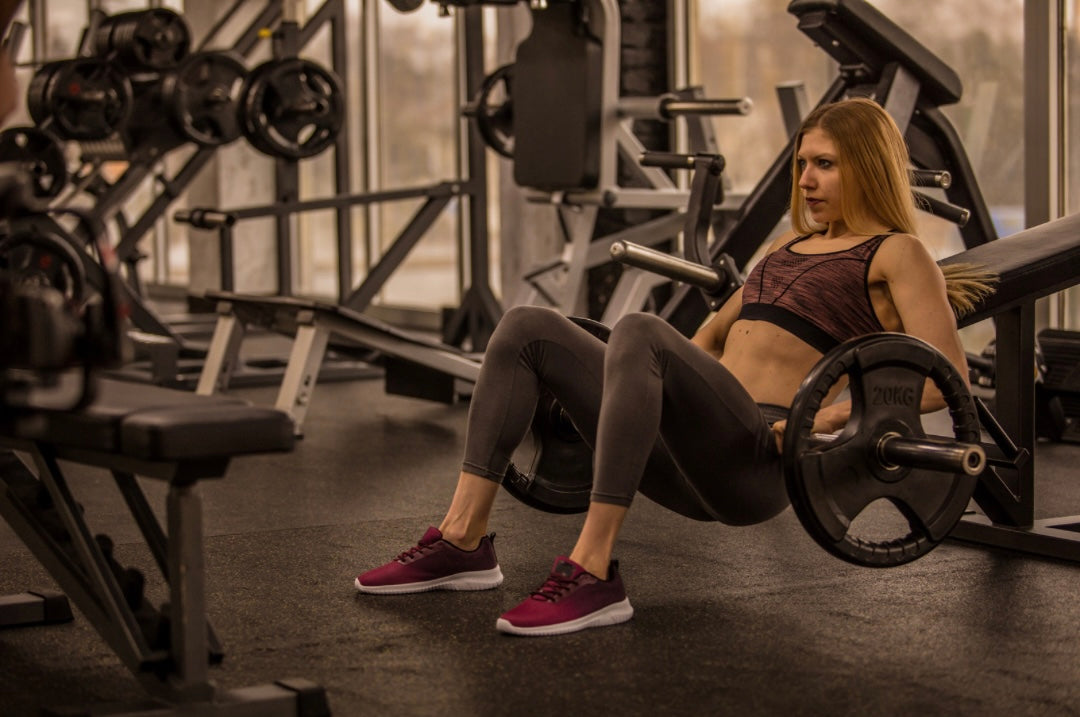Introduction

Hip thrusts have been lauded as the quintessential exercise for glute strengthening in contemporary fitness regimes. However, as we delve deeper into the biomechanics of human movement, certain questions arise about their efficacy and alignment with natural body mechanics. This article explores hip thrusts from the Functional Patterns perspective, providing insights into their true impact on the body.
Understanding Hip Thrusts

Hip thrusts involve a glute bridge-like movement, where one elevates the hips towards the ceiling while the back rests on a bench or the floor. Praised for their targeted impact on the glutes, these exercises have become a staple in many strength and conditioning programs. Yet, their simplicity masks underlying complexities. This movement primarily focuses on the glutes in isolation, aiming to strengthen and engage them effectively. While hip thrusts seem straightforward, focusing on the posterior chain, it doesn’t reflect the dynamic movements of everyday life or sports activities. You may be asking: “Hip thrust vs. glute bridge: which is better?" Both exercises target similar muscle groups, but neither aligns perfectly with the principles of Functional Patterns, which emphasize natural and holistic body movements. A good step in the right direction is to start integrating more gait cycle movements to fully incorporate the glute. Moreover, while isolated glute strengthening such as glute bridges may seem good in the short term, these movements should be replaced with movements that are more well-rounded and balance out the way our glutes evolved to move.
The Functional Patterns Critique

Functional Patterns training, focusing on the natural movement of humans, raises concerns about the static nature of hip thrusts. It argues that while they may isolate glute muscles, they do so in a non-functional context. The lack of integration with dynamic, whole-body movements can lead to muscular imbalances and neglect the body's inherent need for rotational and multi-planar movements.
Functional Patterns training critically examines exercises like the hip thrust and various forms, such as the single-leg hip thrust and barbell hip thrust. The critique points out that while these exercises, including the glute bridge and its variations like the single-leg glute bridge, effectively isolate the glutes, they fall short in promoting functional, whole-body movements. The static, isolated nature of exercises like the glute bridge exercise or even the more complex dumbbell hip thrust fails to integrate the rotational and multi-planar movements essential for holistic bodily function. In comparing glute bridge vs hip thrust, both exercises share this limitation, lacking the dynamic movement quality that Functional Patterns advocates for.

Alternatives and Recommendations
To address the limitations of static exercises like hip thrusts and glute bridges, Functional Patterns proposes more dynamic and integrative exercises. An effective alternative is a system over a symptoms approach. This offers a significant contrast to the stationary nature of the barbell hip thrust or single-leg glute bridge. Integrating a systems approach helps to incorporate the glutes, core, and upper body in a synchronized manner, mimicking the rotational and multi-planar movements that are part of natural human activities. A common question asked is "Are hip thrusts effective for glutes?" While they can activate glute muscles, they do so in isolation, which may not translate effectively to improved functional movement or overall athletic performance. Such as joint ossification that can happen from moving certain parts of the body over another, Moreover, isolation of a certain part of the body creates a dependency on one end and an ossification on the other.
By taking a systems approach we account for elements of balance, coordination, and functional strength. By using the cable machine for example, it allows for resistance to be applied in a way that challenges the body through various planes, closely mimicking real-world movements. This kind of training is more representative of the actions our bodies are designed for, such as turning, reaching, and lifting in a dynamic environment.
At Functional Patterns we incorporate exercises that simulate natural human movements like squatting, reaching, and lifting with a focus on whole-body coordination. These exercises move beyond the limitations of isolated glute exercises like the dumbbell hip thrust, offering a comprehensive approach to fitness that not only strengthens the glutes but also ensures functional and efficient body movement.
Conclusion
While exercises like the barbell hip thrust and single-leg hip thrust can effectively strengthen glutes in isolation, it's important to consider their overall contribution to holistic, functional movement. The hip thrust machine and variations like the dumbbell hip thrust and weighted glute bridge, though popular in many fitness regimes, do not fully align with the body's need for dynamic and multi-planar movements. Functional Patterns suggests integrating glute exercises, such as the rotational step and press with a cable machine, into your routine. This approach targets the glutes, as seen in the glute bridge exercise or the single-leg glute bridge, and promotes a more comprehensive form of fitness. By focusing on natural movements and functionalities, rather than isolating muscles through exercises like the glute bridge vs hip thrust, we can achieve a higher level of overall physical health and well-being.







